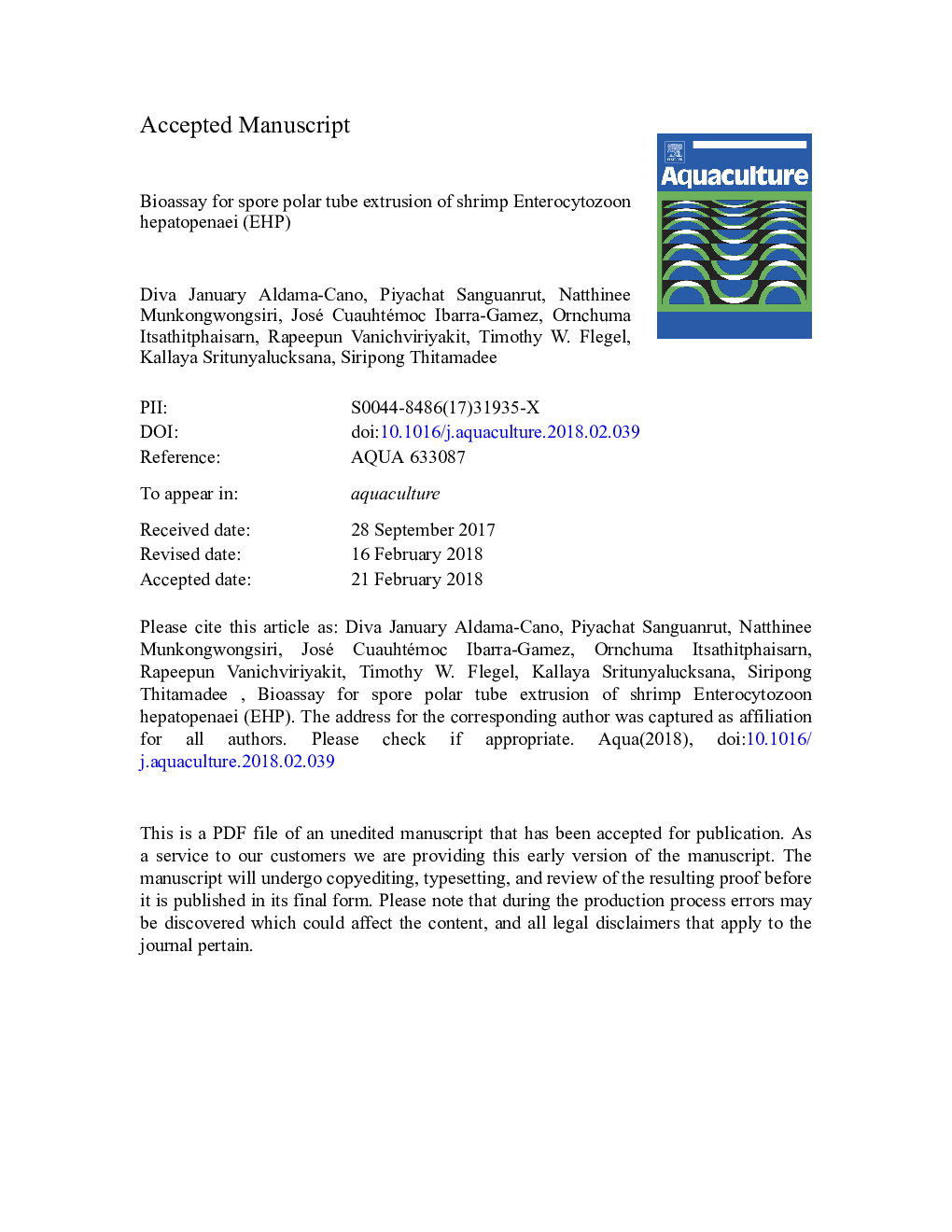| Article ID | Journal | Published Year | Pages | File Type |
|---|---|---|---|---|
| 8493293 | Aquaculture | 2018 | 30 Pages |
Abstract
The microsporidian Enterocytozoon hepatopenaei (EHP) is an intracellular spore-forming parasite, which has recently become a serious threat of cultivated penaeid shrimp in Asia. These studies were aimed to generate comprehensive study on EHP infection as well as establishing innovative strategies to reduce its viability and potential infectivity in shrimp farms. The EHP spore purification method by using Percoll gradient separation with ultracentrifugation step at 15â¯Â°C has been developed. The viability of the purified spores has been evaluated by its polar tube extrusion with Phloxin B staining. The active EHP spores were exposed to different temperature (â20â¯Â°C, 4â¯Â°C and 33â¯Â°C) and chemical treatments including calcium hypochlorite, formalin, potassium permanganate (KMnO4) and ethanol to identify the conditions that can be used to inhibit the extrusion of the polar tube. Complete inhibition of activity was demonstrated either by freezing the spores at â20â¯Â°C for at least 2â¯h or by treating them with chemicals. The chemicals that yielded 100% inhibition were 15â¯ppm KMnO4 for 15â¯min, 40â¯ppm of 65% active chlorine for 15â¯min or 10â¯ppm of 65% active chlorine for 24â¯h and 20% ethanol for 15â¯min. However 200â¯ppm formalin resulted in a maximum reduction of 95.33%. Taken together, our protocol demonstrates for the first time that living EHP spores can be isolated and purified, providing a potential platform for future testing and development of EHP's control strategies.
Keywords
Related Topics
Life Sciences
Agricultural and Biological Sciences
Aquatic Science
Authors
Diva January Aldama-Cano, Piyachat Sanguanrut, Natthinee Munkongwongsiri, José Cuauhtémoc Ibarra-Gámez, Ornchuma Itsathitphaisarn, Rapeepun Vanichviriyakit, Timothy W. Flegel, Kallaya Sritunyalucksana, Siripong Thitamadee,
